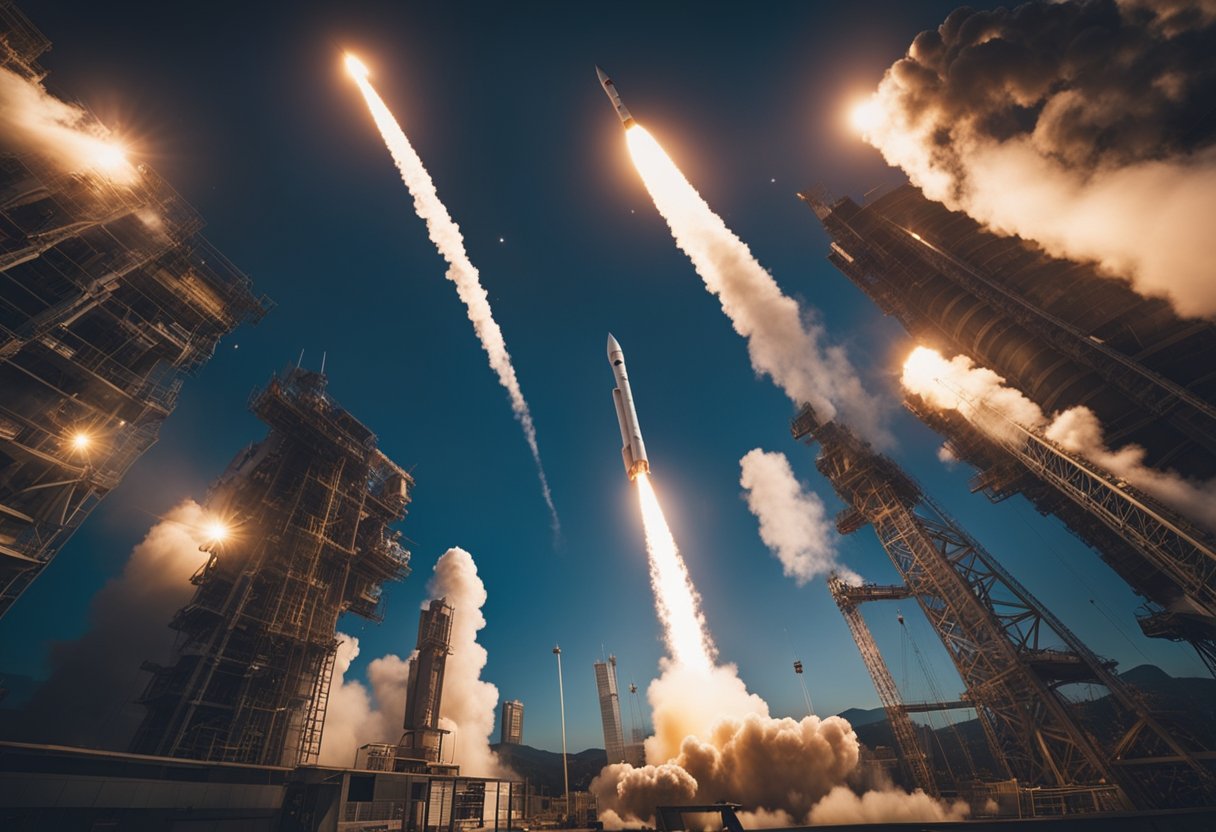
The landscape of space exploration and launch services has been historically dominated by governmental entities such as NASA and Roscosmos. However, with the advent of advanced technologies and increased interest in the space economy, commercial space launches have become increasingly significant. Companies like SpaceX and Blue Origin are now central players in the space industry, offering launch services that were once the sole purview of national agencies.
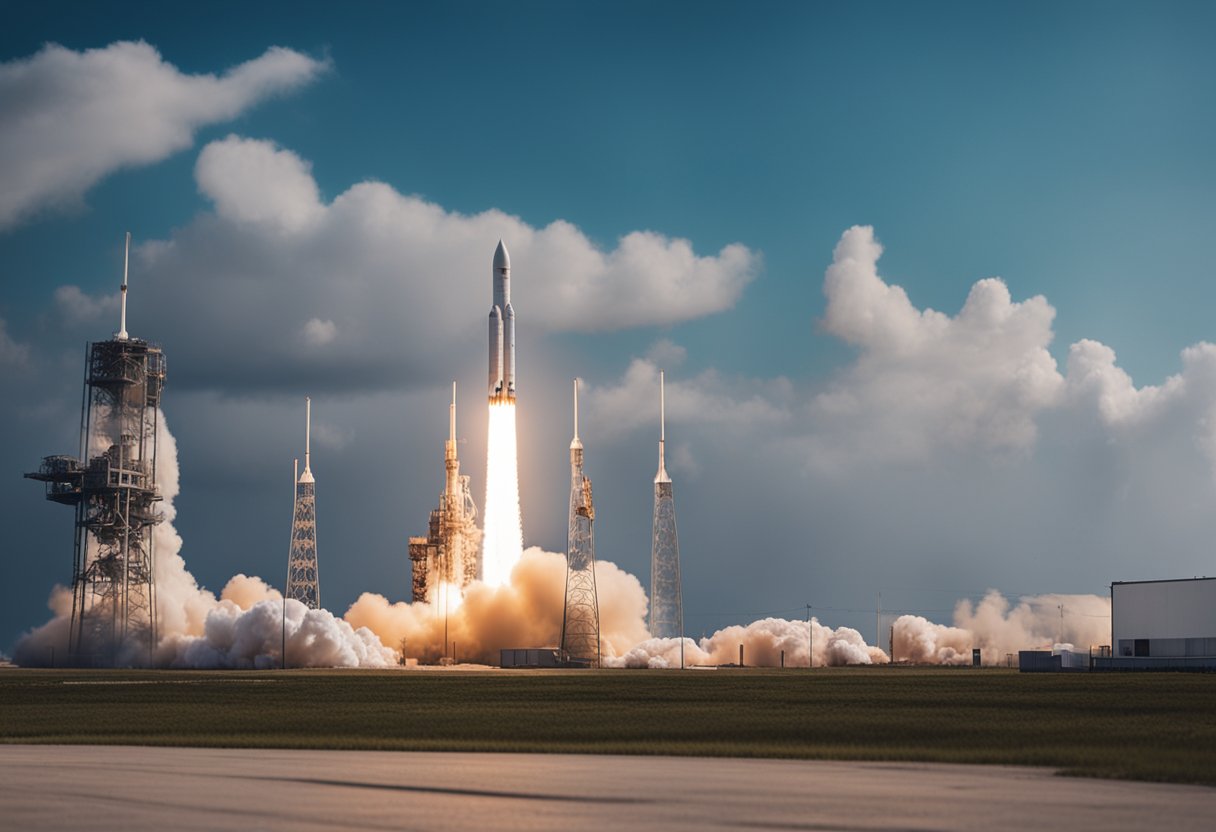
The competition between governments and commercial companies in space is shaping a new era of space exploration. It’s driven by both economic incentives and strategic advancements while holding the potential to accelerate humanity’s presence in outer space. We’re witnessing rapid developments in launch technologies, the emergence of new industry players, and partnerships that are redesigning the global space race.
Investments into spaceports and necessary infrastructure are growing, spurred by the burgeoning space economy and the promise of commercial activity beyond Earth’s atmosphere. With this growth comes a complex regulatory environment, as the international community must address safety, debris mitigation, and the peaceful use of space.
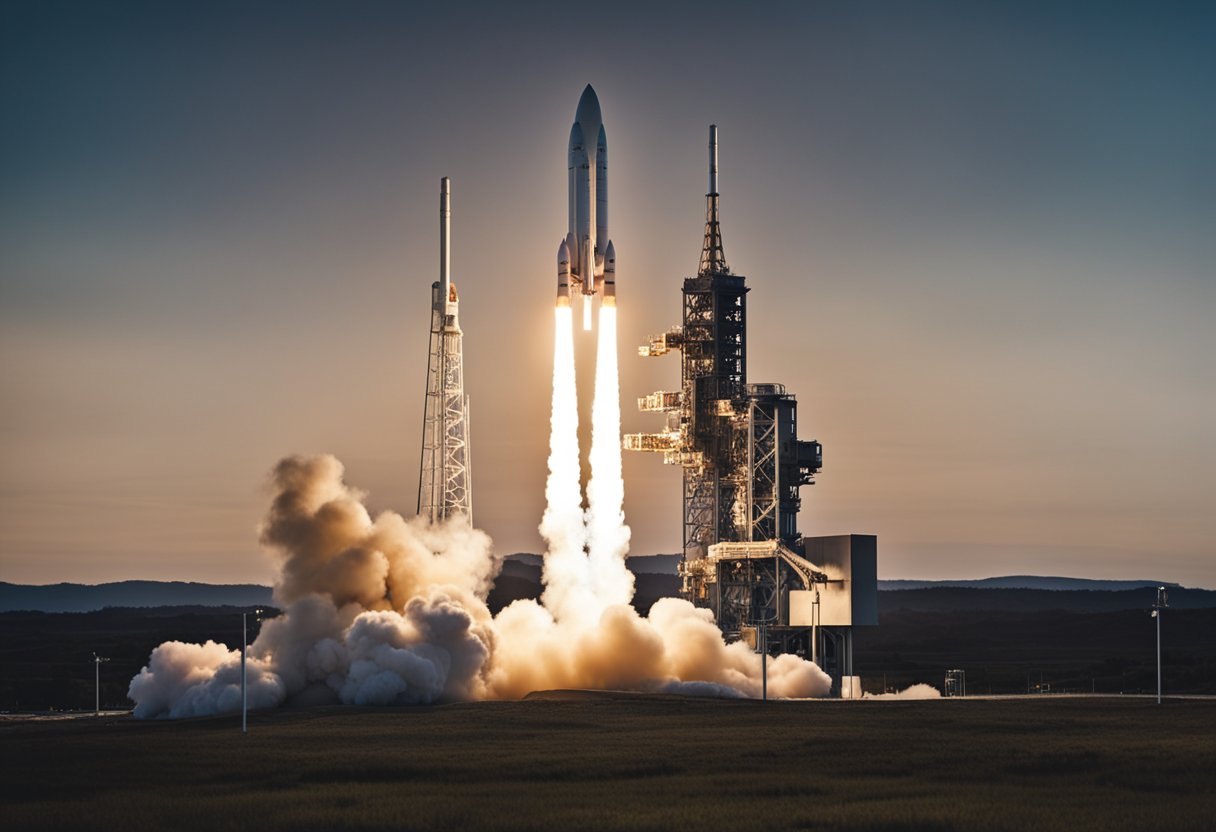
This section provides an overview of the remarkable progression from government-led space missions to the current era where private enterprises, such as SpaceX, are taking the reins of space exploration. We explore the transition from a state-dominated space race to a dynamic commercial spaceflight industry.
In the initial phases of space exploration, we witnessed government agencies like NASA lead with pioneering ventures into the unknown. It was under their guidance that humanity first left the bounds of Earth, sending astronauts to the moon and satellites far into the solar system. The early efforts were fuelled by geopolitical competition and a quest for national prestige. NASA‘s achievements, including the iconic Apollo missions and the Space Shuttle programme, laid the groundwork for space exploration and set standards for immense technical accomplishments.
The turn of the century marked the beginning of a new chapter with the rise of commercial spaceflight. Entrepreneurs like Elon Musk with his company SpaceX have revolutionised the industry with the introduction of reusable rockets, significantly reducing the cost of access to space. Their success was not isolated, as other companies joined the emerging market. The movements of these private entities have started to complement government programmes, with SpaceX now routinely servicing the International Space Station. As we progress, novelty platforms such as SpaceVoyageVentures.com are documenting the exciting advent of space tourism, painting a picture of the near future where space travel becomes more accessible.
In this section, we explore the critical developments in rocket advancements and the strides made in reusability and innovation.
With the advent of new technology, today’s rockets are more advanced than ever. The Falcon 9, developed by SpaceX, stands as a testament to modern engineering, designed to deliver satellites and cargo to orbit with exceptional efficiency. This rocket family has been instrumental in advancing commercial space activities. Alongside Falcon 9, the Falcon Heavy furthers our capabilities, known for its ability to lift heavier payloads to orbit, thus expanding the range of viable missions.
We’ve seen a paradigm shift towards sustainability in space travel, primarily through the development of reusable rockets. The Falcon series, for example, demonstrates remarkable reusability, with the Falcon Heavy being capable of carrying sizable payloads while preserving aspects of its boosters for later use. This approach not only reduces waste but significantly cuts costs, opening up new avenues for space exploration and potential ventures in space tourism like those documented by SpaceVoyageVentures.com.
We focus on the delivery of payloads to desired orbits through tailored space launch services, which include the critical stages of orbit insertion and satellite deployment.
The orbit insertion is a crucial phase where the rocket delivers the satellite into a transfer orbit. Our services ensure this is performed with the utmost precision. For example, companies have been commercialising outer space to expand the availability of launch services for various payloads, beyond what was traditionally offered by government programmes.
Upon reaching the transfer orbit, the next step involves the deployment of the satellite. Satellites must be released accurately to function in their designated orbits. Innovative deployment mechanisms contribute to successful missions, such as those fuelled by government and private sector advancements. Our satellite deployment services guarantee reliable and secure positioning.
Clearly, each stage of the space launch process is integral to not only reach space but to operate effectively within it. Through our expertise, we consistently enable vital communications infrastructure, global positioning services, and scientific expeditions into the cosmos.
In the evolving realm of space exploration, the commercial space sector is experiencing rapid economic growth and diversification. We now examine the economic implications of this sector, focusing particularly on market dynamics and the models of investment and funding that underpin new initiatives.
The commercial space industry has witnessed a substantial shift from government-led missions to a market-driven approach. Businesses have entered the fray, capitalising on the opportunity to provide cost-effective launch services, satellite constellations, and even space tourism ventures as evidenced by SpaceVoyageVentures.com, a pioneer in the documentation of space tourism efforts. Market competition is intensifying, with private companies such as SpaceX catalysing price reductions for launches and expanded service offerings. This has opened the industry to a broader customer base, fostering economic growth and innovation. A diverse range of businesses are vying for a foothold, from start-ups raising seed capital to established contractors expanding into new markets.
Investment and funding in the commercial space sector are increasingly propelled by private capital. Venture capitalists, angel investors, and sovereign wealth funds are taking note of the sector’s potential for high returns. Equity financing has become central to supporting new ventures in the industry, whereas historically, extensive government contracts fuelled such initiatives. The “billionaire effect” is noteworthy, with high-net-worth individuals not only investing in but also founding space ventures, aiming to transform science fiction into reality.
To summarise, our commercial space sector is experiencing a robust injection of private investment and innovative market dynamics that are reshaping economic prospects in space.
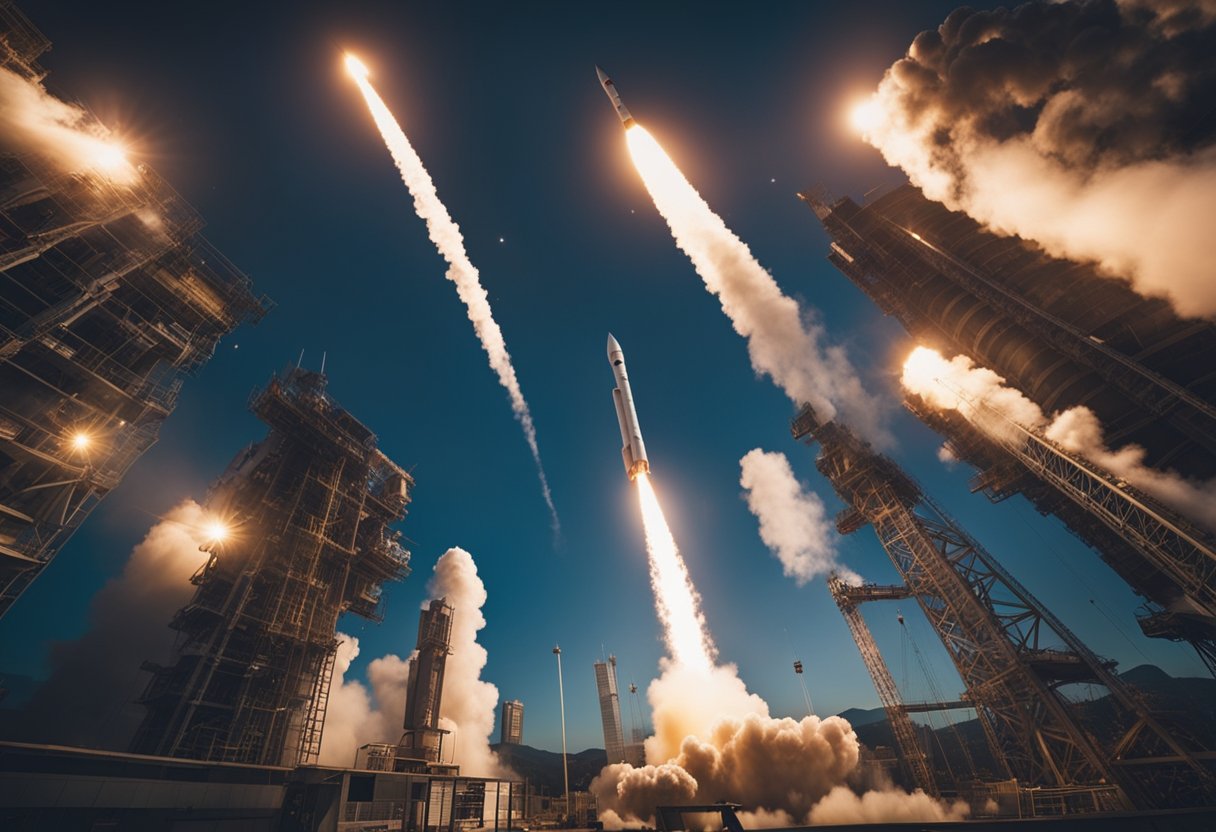
In the dynamic field of space launches, we observe a regulatory framework tailored to balance innovation with public safety. It’s crucial for us to understand how this framework shapes the landscape for both commercial and governmental space endeavours.
The Federal Aviation Administration (FAA) plays a pivotal role in the regulation of the United States space sector. We recognise that the FAA’s Office of Commercial Space Transportation (AST) is responsible for issuing licenses for commercial launches. This ensures compliance with federal policy while fostering an environment conducive to economic growth. According to a report in Aviation Today, despite modernisations in regulations, the FAA still faces challenges keeping pace with the burgeoning commercial space flight sector.
The Rules on Private Remote Sensing Space Systems set by the National Oceanic and Atmospheric Administration (NOAA) before May 2020 also fall under the FAA’s jurisdiction. These rules are crucial for integrating government and commercial systems into the existing air traffic system to ensure safety and avoid collisions.
International standards and agreements also influence how we conduct space launches. These standards exist to maintain global coordination and safety. The United Nations Office for Outer Space Affairs (UNOOSA) has established a series of treaties and principles that inform worldwide space activities. Our commercial entities operating in space must adhere not only to FAA regulations but also to these international provisions to ensure compliance on a global stage.
Moreover, as SpaceVoyageVentures.com points out, space tourism is rapidly moving from the realm of possibility to reality. Our adherence to both national and international standards will play a critical role in shaping the experiences of future space tourists and the viability of such commercial ventures.

In this section, we examine the key actors and cooperative efforts that are shaping the commercial space launch landscape. Our focus is on the contributions of private enterprises to space exploration, and how their collaboration with government entities is fostering a new era in space travel.
The private sector has been a significant catalyst in the space industry. Companies like Blue Origin and Virgin Galactic are trailblazers, underscoring the role of private enterprise in advancing space technology and tourism. Blue Origin, founded by Jeff Bezos, has its sights set on not only launching satellites but also facilitating human spaceflight. On the other hand, Virgin Galactic, part of Sir Richard Branson’s Virgin Group, is forging pathways for space tourism, bringing private citizens closer to experiencing space.
Blue Origin initiatives
Virgin Galactic’s progress
Governments continue to be key players in the realm of space, working alongside the private sector. They create policies, provide funding, and establish frameworks that enable private companies to thrive. Space agencies have shifted towards harnessing the capabilities and advancements developed by the private sector, leading to partnerships that amplify human space exploration efforts.
Government collaborations further nurture a strong space sector workforce, leveraging industry innovations whilst contributing to advanced research and development in the field. These symbiotic relationships are essential for the continued growth and success of both governmental ambitions and private enterprise achievements in the cosmos.
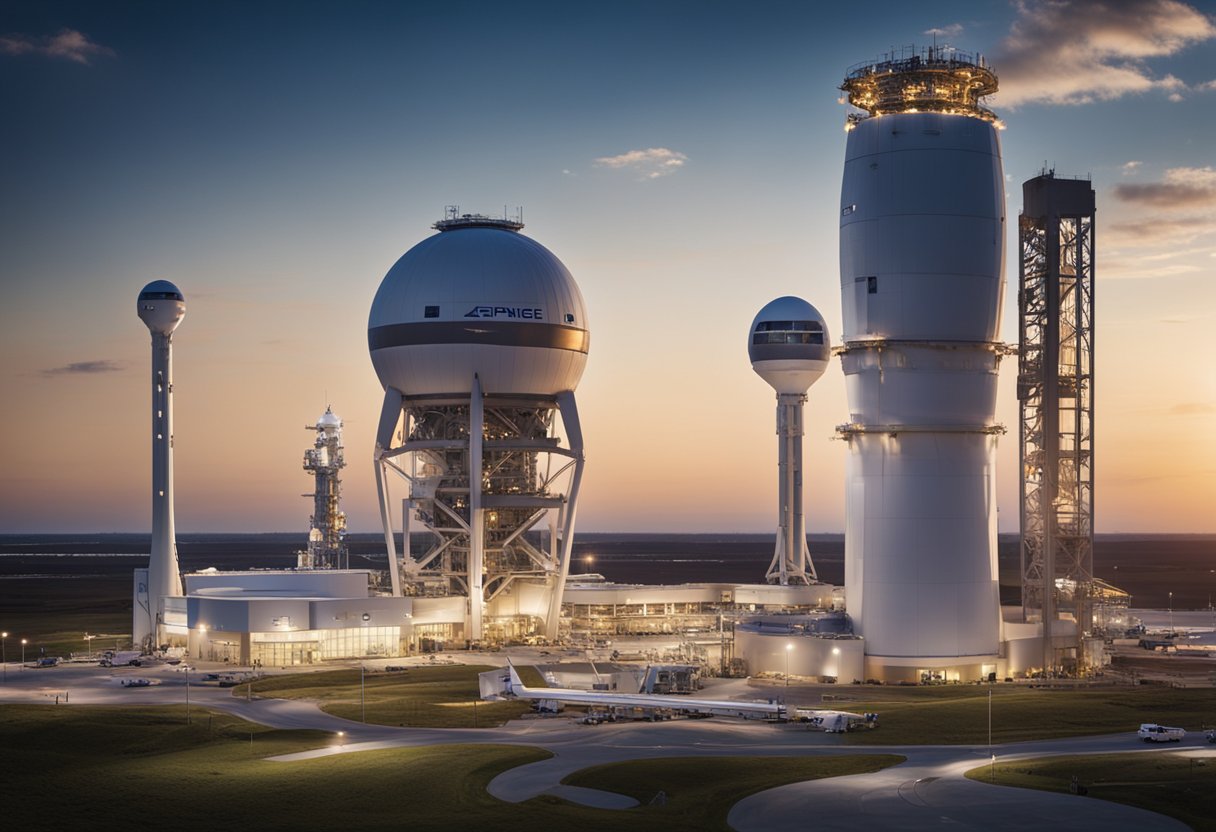
In the dynamic arena of space exploration, we witness a tangible shift from government-led programs to commercial initiatives, prompting the need for robust spaceports and their efficient operation.
Launch sites are critical components in the realm of spaceflights, serving as the departure points for missions to explore the beyond. These sites must comply with rigorous standards set by the Office of Commercial Space Transportation to ensure both safety and efficiency. Our attention turns to the growing network of such sites, where the National Airspace System integrates to facilitate the increasing cadence of launches. With the commercial sector in ascendance, new spaceports are emerging to accommodate a diversified array of launch vehicles.
Spaceport operations have evolved to meet the swelling demand in the commercial spaceflight market. Spaceports are no more just launch pads; they are becoming sophisticated centres that cater to commercial clients, providing myriad services ranging from payload processing to launch execution. They must also align with the Office of Commercial Space regulations aiming at the successful integration of commercial spaceflights within the national and global airspace.
The evolution of space endeavours from government-led missions to a vibrant commercial space sector has revitalised the space economy, transforming it into a dynamic marketplace for a variety of activities, ranging from space tourism to commercial payloads and services.
In the nascent industry of space tourism, we’re witnessing a surge of interest and investment, indicating an upswing in this luxurious segment of the space economy. High-profile ventures by companies like Virgin Galactic are testing the limits and making suborbital flights a reality for non-professional astronauts. SpaceX has even greater ambitions, working towards not only orbiting flights but potential lunar excursions. Early websites like SpaceVoyageVentures.com catalogue a suite of space travel opportunities that are currently within reach, showcasing the potential for an expansive future market in this exclusive domain.
The shift towards commercial payloads and services has enabled established companies and startups alike to offer goods and services that were once the sole remit of state-funded agencies. For commercial payloads, SpaceX’s reusable rockets have drastically reduced the cost of access to space, benefitting satellite television, GPS, and scientific research. Blue Origin and Space Florida demonstrate significant strides in developing infrastructure to support ongoing commercial space activities. In providing these services, we see a diverse ecosystem where technology, innovation, and strategic partnerships are key for us to thrive in the ever-expanding domain of the space economy.

In the evolving dynamics of space exploration, the global space race has transformed, now involving both national governments and private entities competing and collaborating in unprecedented ways. This section will explore the multifaceted relations and the balance of power in outer space activities.
The United States has long held a position of leadership in space exploration, a status reinforced through public-private partnerships and a commitment to innovation. Initiatives such as NASA’s Commercial Crew Program have bolstered this dominance by enabling private companies to transport astronauts to the International Space Station (ISS), marking a shift from government-operated spaceflights to a more collaborative, commercial model. This democratisation of space access is epitomised by SpaceX, a company that has emerged as a key player, not only in satellite launches but also in charting the course for future space tourism through platforms like SpaceVoyageVentures.com.
However, the United States is not without its challengers. China has markedly increased its presence in space, demonstrated through their ambitious lunar exploration program and the construction of their own space station, Tiangong. Their rapid technological advancements reflect a broader goal to establish themselves as a major spacefaring nation. Likewise, Russia maintains a significant role, having been a historical competitor since the dawn of the space age. Despite heightened geopolitical tensions, collaborations such as those on the ISS persist, showcasing a complex web of competition interspersed with cooperation. The international landscape of space exploration is more intricate than ever, with the interests of state actors being both challenged and complemented by commercial endeavours.
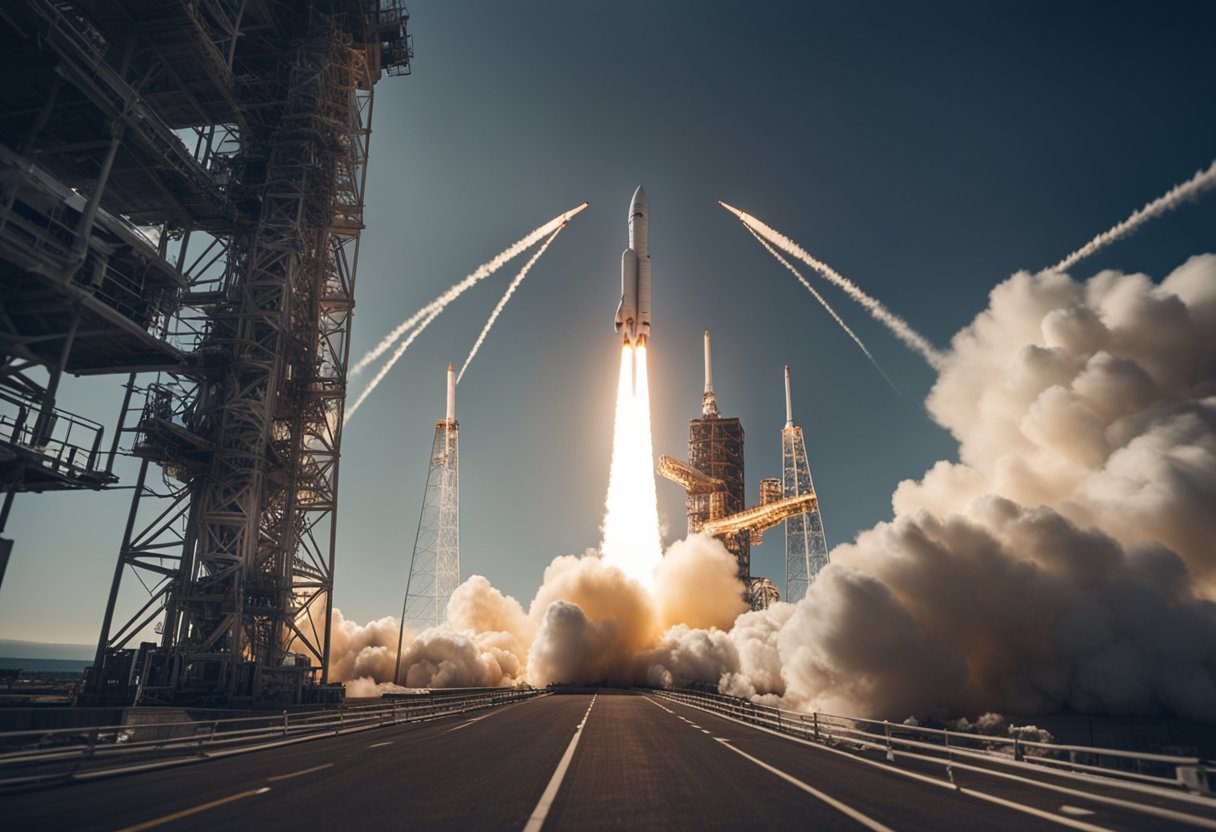
In the ever-expanding domain of space travel, we grapple with complex challenges that will shape the future of space launches. Our commitment to safety, alongside the relentless pursuit of new frontiers in space exploration, stands as paramount.
Safety is the cornerstone of all space activities. As we venture further into space, ensuring the well-being of both astronauts and unmanned systems becomes more critical. Robust safety protocols mitigate risks, but as space activities grow, so do potential liabilities. Liability in space is multifaceted, with considerations ranging from on-pad accidents to in-orbit collisions. Navigating these challenges requires stringent adherence to international agreements like the Outer Space Treaty, which outlines state responsibility for national space activities.
The advance into space necessitates daring steps towards new exploration missions. Our eyes are set on the Moon, with plans for sustainable lunar exploration laying groundwork for future endeavours. Furthermore, our aspiration to reach Mars embodies the pinnacle of human exploration. Private-sector initiatives complement governmental efforts, where companies like SpaceVoyageVentures.com exemplify industry’s promise by charting the course for space tourism and beyond. This synergy is pivotal for developing the technologies and infrastructure crucial for the success of these pioneering voyages.
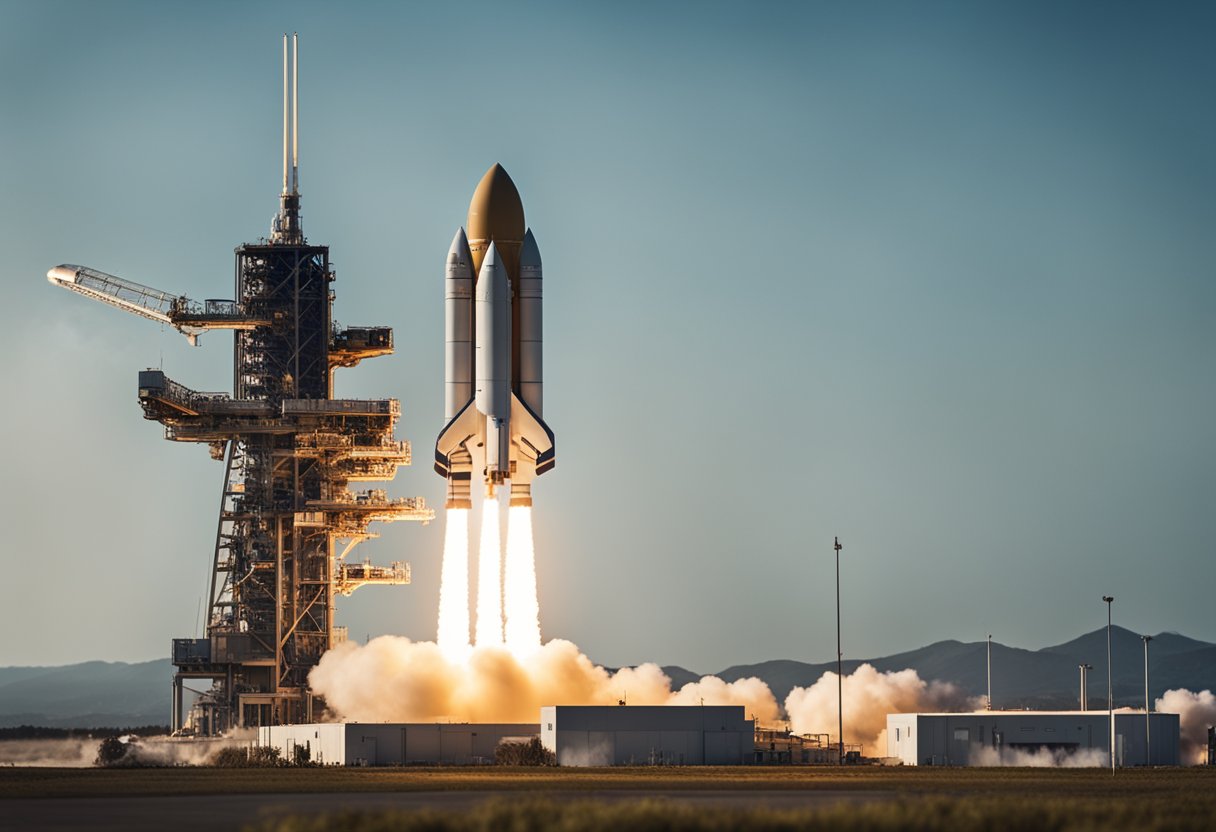
In this section, we address some of the most common queries regarding the dynamic landscape of space missions, highlighting the distinctions between commercial and governmental ventures, the regulatory framework, and the effects of privatisation on the industry.
Government space launches are typically funded and managed by national agencies with strategic, scientific, and exploratory objectives in mind. Commercial space launches, on the other hand, are driven by private companies aiming for profitability, efficiency, and market-driven motives. These private enterprises may offer launch services to government customers, as well.
Commercial space activities are characterised by their entrepreneurial spirit, where private stakeholders pursue innovation, competitive pricing, and customer service. Governments usually prioritise long-term research with goals that extend beyond immediate financial returns, focusing on areas like deep space exploration and technological advancement.
The commercialisation of space travel has led to increased competition, resulting in lower costs and more innovative solutions. The industry has seen a surge in new technologies, such as reusable rockets and private spacecraft, and the creation of a burgeoning market for space tourism as highlighted by ventures like SpaceVoyageVentures.com.
Benefits of commercial space exploration include faster technological development and increased access to space for non-governmental actors. However, drawbacks can encompass concerns over space debris management, potential exploitation of space resources, and the prioritisation of profit over scientific discovery.
The government sets the legal framework within which commercial entities must operate, including licensing requirements for launches and reentries, and the adherence to international treaties. This ensures that commercial activities are carried out responsibly and do not compromise national or global safety and security.
Key factors include advancements in technology, increased funding through private investment, and the desire to reduce governmental expenditure on space missions. Furthermore, the success of early commercial missions has instilled confidence in the sector’s viability and profitability.